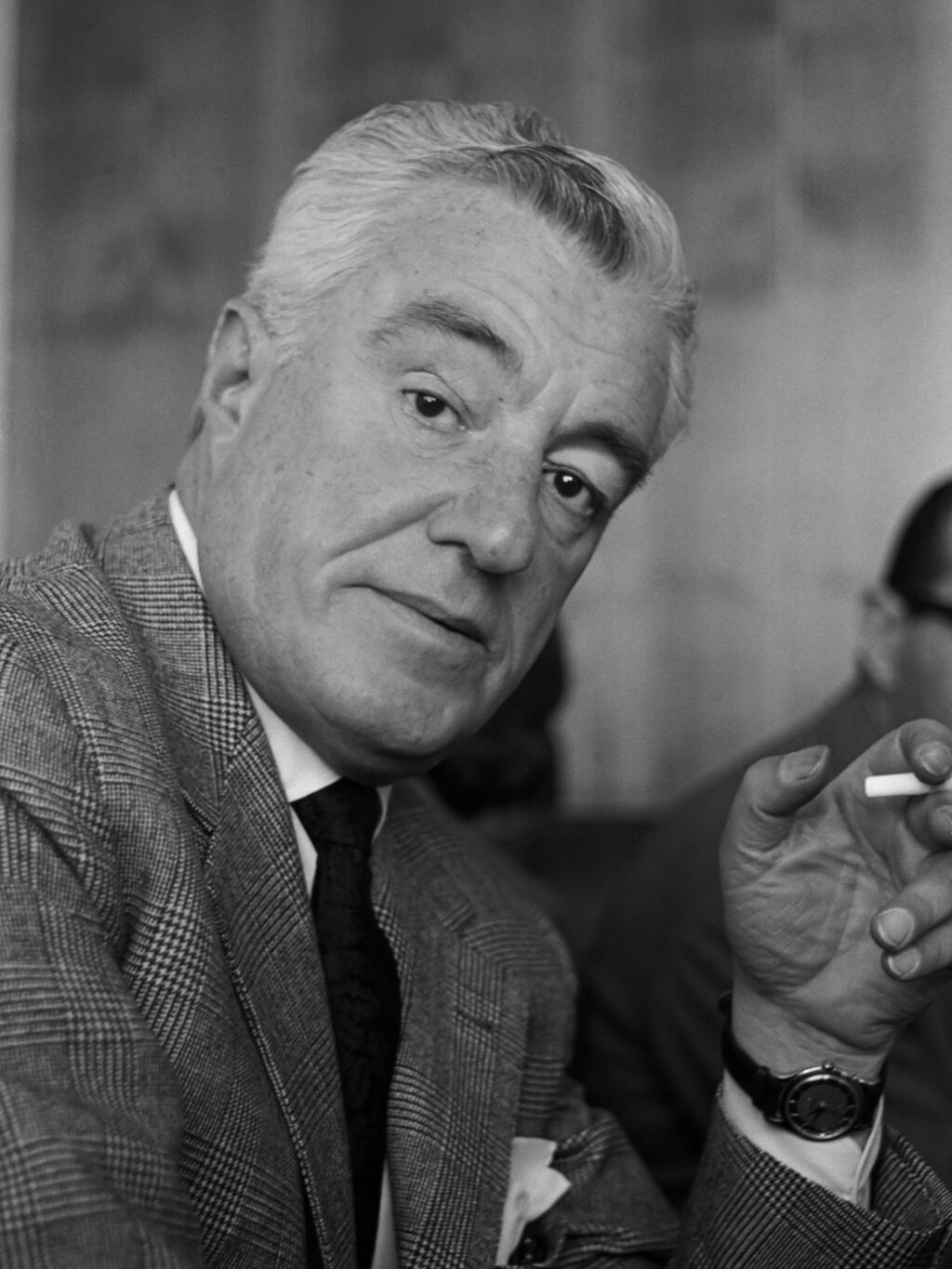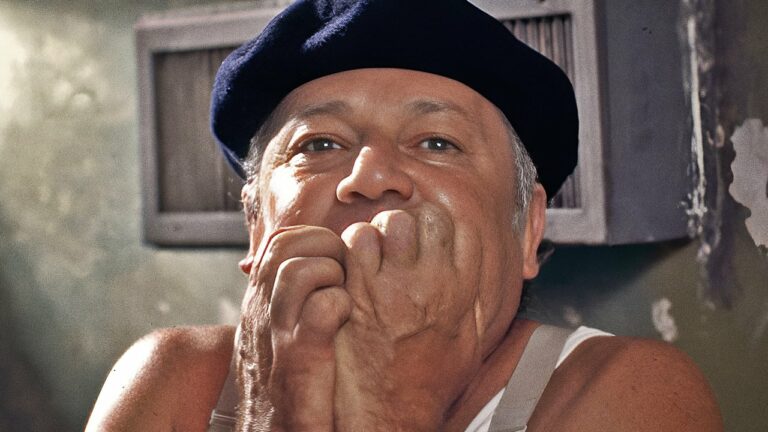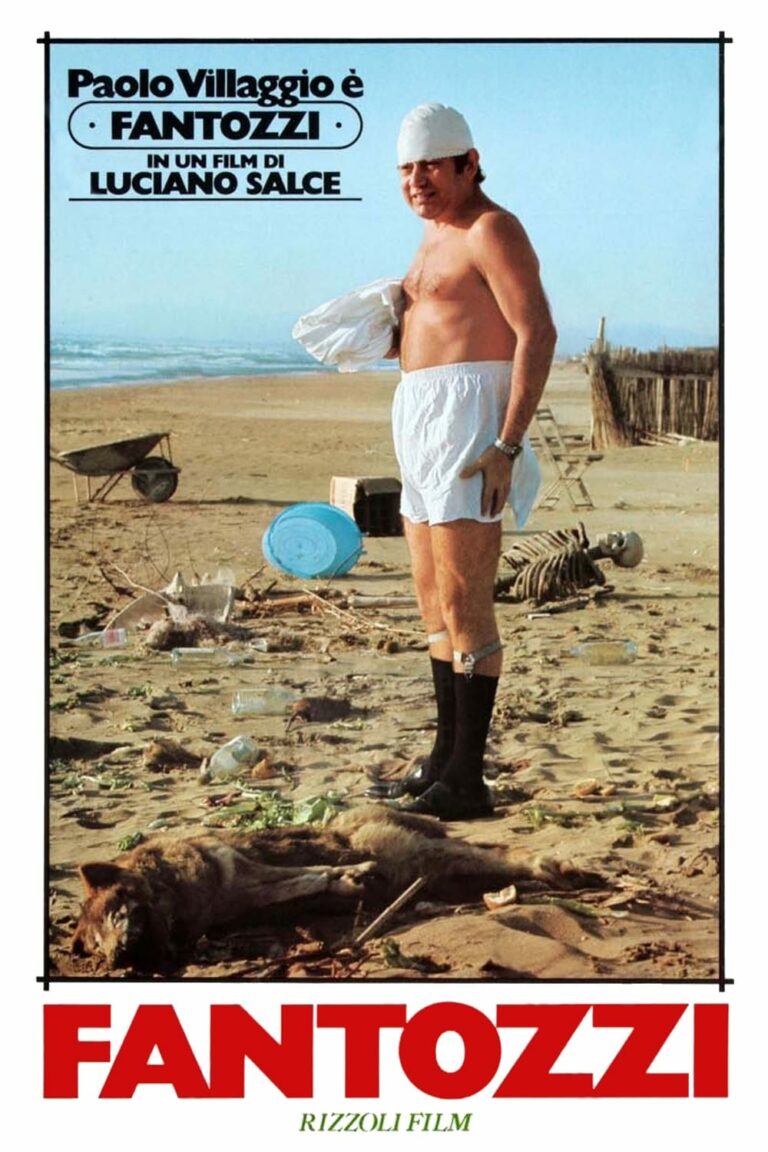
Vittorio de Sica op Schiphol (Londen-Rome) koopt souvenirs *22 maart 1962
Vittorio De Sica (1901–1974) was an Italian film director, actor, and screenwriter whose work left an indelible mark on world cinema. A central figure in the Italian Neorealist movement, De Sica is best known for his deeply humanistic films that captured the struggles of ordinary people with unparalleled emotional depth and realism. His masterpieces, such as Bicycle Thieves and Umberto D., continue to be celebrated as some of the finest examples of cinematic art.
Early Life and Education
Vittorio De Sica was born on July 7, 1901, in Sora, a small town in the Lazio region of Italy, to an Italian father, Umberto, and a Neapolitan mother, Teresa. His family moved to Naples when he was a child and later to Rome. Despite financial difficulties, De Sica’s father encouraged his artistic ambitions, fostering his early interest in theater and film.
De Sica initially studied accounting and worked in a bank, but his passion for acting soon took precedence. In the early 1920s, he began performing in small theater productions, gradually making his way into the Italian entertainment industry.
Rise to Stardom as an Actor
De Sica’s natural charm and good looks quickly earned him leading roles in Italian cinema during the 1930s. He became a popular actor, appearing in romantic comedies and light dramas that were typical of the period. Some of his notable performances during this time include:
- Doctor, Beware (Il Signor Max, 1937)
- Maddalena, Zero for Conduct (Maddalena, zero in condotta, 1940)
While these films established De Sica as a beloved figure in Italian cinema, they were far removed from the socially conscious works he would later create.
Transition to Directing
De Sica’s desire to tell meaningful stories led him to pursue a career in directing. His early directorial efforts included light-hearted comedies like Rose scarlatte (1940) and Teresa Venerdì (1941). However, the socio-political upheaval of World War II inspired him to explore more serious themes, aligning him with the emerging Neorealist movement.
The Birth of a Neorealist Master
De Sica’s collaboration with screenwriter Cesare Zavattini marked the beginning of a new chapter in his career. Together, they crafted films that depicted the struggles of ordinary people in postwar Italy. Their partnership was instrumental in shaping the ethos of Italian Neorealism.
Notable Films and Achievements
- “The Children Are Watching Us” (1944)
This film marked De Sica’s transition into Neorealism, exploring the effects of adult conflicts on a young boy. - “Shoeshine” (1946)
A story of two shoeshine boys trapped in a corrupt system, Shoeshine was the first Italian film to win an honorary Academy Award, establishing De Sica’s international reputation. - “Bicycle Thieves” (1948) (Ladri di biciclette)
This heartbreaking tale of a father and son searching for a stolen bicycle remains one of the greatest films of all time. It won multiple awards, including an Academy Award for Best Foreign Language Film. - “Miracle in Milan” (1951) (Miracolo a Milano)
A departure from gritty realism, this whimsical fable explored themes of poverty and social justice through a fantastical lens. - “Umberto D.” (1952)
Often regarded as De Sica’s most personal film, Umberto D. tells the story of an elderly man’s fight to maintain his dignity. It is a poignant exploration of loneliness and resilience. - “Yesterday, Today and Tomorrow” (1963) (Ieri, oggi, domani)
This anthology film, starring Sophia Loren and Marcello Mastroianni, showcased De Sica’s versatility by blending humor and romance. It won the Academy Award for Best Foreign Language Film. - “The Garden of the Finzi-Continis” (1970) (Il giardino dei Finzi-Contini)
Set during World War II, this film portrays the tragic decline of a wealthy Jewish family under Fascist persecution. It earned De Sica his second Academy Award for Best Foreign Language Film.
Themes and Style
De Sica’s films were characterized by their humanism, emotional depth, and focus on ordinary lives. He often used non-professional actors to achieve authenticity, capturing the raw essence of human experience. His collaborations with Zavattini emphasized the struggles of marginalized individuals, exploring themes of poverty, dignity, and social injustice.
While Neorealism dominated his early work, De Sica later diversified into comedies, romances, and historical dramas, showcasing his range as a filmmaker.
Personal Life
De Sica married actress Giuditta Rissone in 1937, with whom he had a daughter, Emilia. However, he later formed a long-term relationship with Spanish actress María Mercader, whom he married in 1968 after obtaining a divorce. They had two sons, Manuel and Christian.
De Sica was known for his charismatic personality, often juggling his professional commitments with personal challenges. Despite his fame, he remained deeply committed to portraying the struggles of everyday people through his work.
Legacy and Influence
Vittorio De Sica’s contribution to cinema is immeasurable. His films redefined the possibilities of storytelling, inspiring filmmakers worldwide, including Satyajit Ray, Akira Kurosawa, and Martin Scorsese. The emotional power and social relevance of his work continue to resonate, ensuring his place as one of the greatest directors in film history.
De Sica’s influence extends beyond Neorealism, as his later films demonstrated his ability to navigate different genres while retaining his humanistic perspective.
Awards and Recognition
De Sica’s films earned numerous accolades during his lifetime, including:
- Four Academy Awards for Best Foreign Language Film
- Honorary Academy Award for Shoeshine
- The Palme d’Or at the Cannes Film Festival for Miracle in Milan
In 1971, he received an honorary BAFTA for his outstanding contribution to cinema.
Death and Remembrance
Vittorio De Sica passed away on November 13, 1974, in Neuilly-sur-Seine, France, following surgery for lung cancer. He was 73 years old.
Though he is no longer with us, De Sica’s legacy endures. His films remain a testament to the power of cinema to illuminate the human condition, bridging the gap between art and social consciousness.



